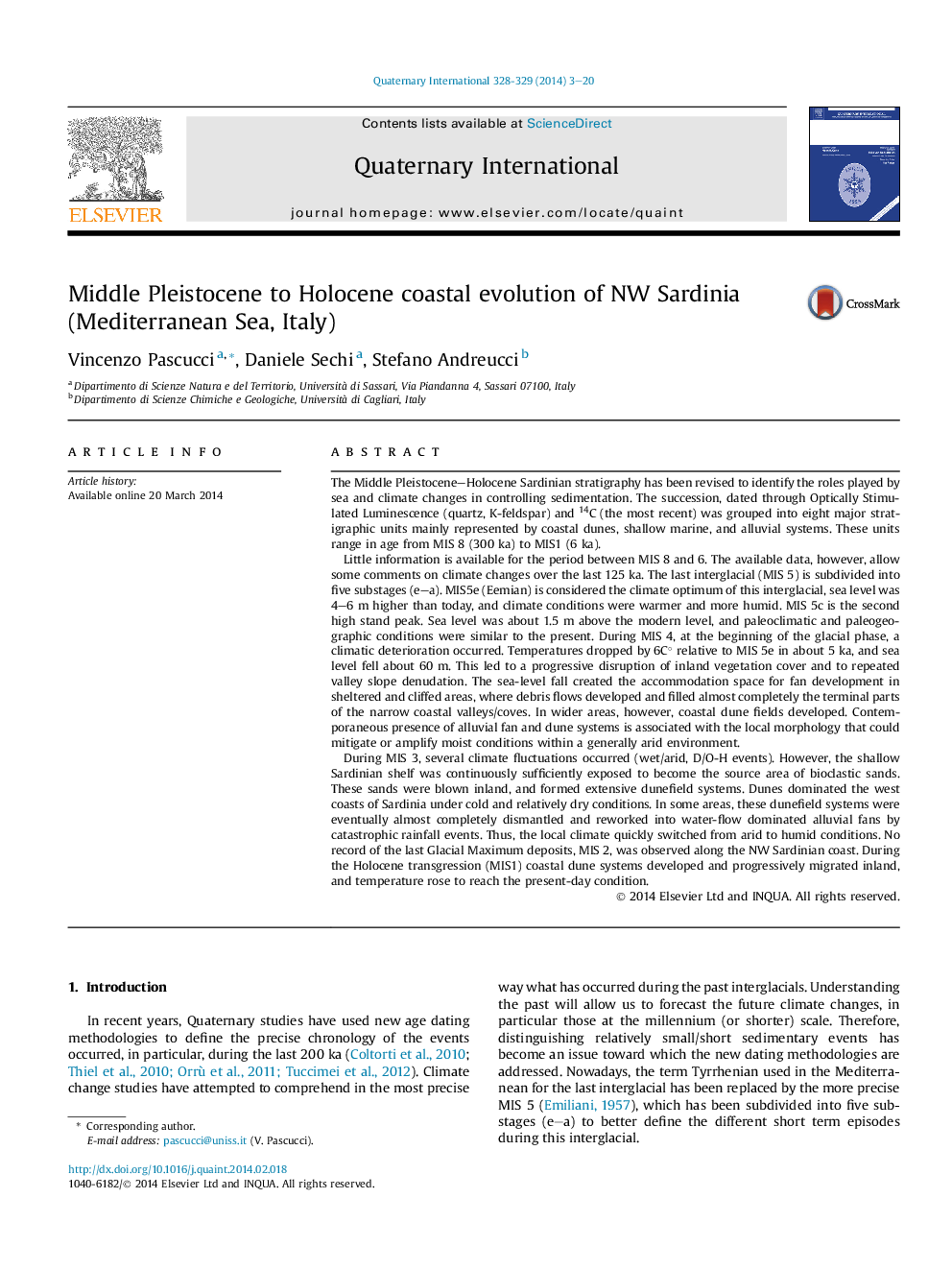| Article ID | Journal | Published Year | Pages | File Type |
|---|---|---|---|---|
| 7452382 | Quaternary International | 2014 | 18 Pages |
Abstract
During MIS 3, several climate fluctuations occurred (wet/arid, D/O-H events). However, the shallow Sardinian shelf was continuously sufficiently exposed to become the source area of bioclastic sands. These sands were blown inland, and formed extensive dunefield systems. Dunes dominated the west coasts of Sardinia under cold and relatively dry conditions. In some areas, these dunefield systems were eventually almost completely dismantled and reworked into water-flow dominated alluvial fans by catastrophic rainfall events. Thus, the local climate quickly switched from arid to humid conditions. No record of the last Glacial Maximum deposits, MIS 2, was observed along the NW Sardinian coast. During the Holocene transgression (MIS1) coastal dune systems developed and progressively migrated inland, and temperature rose to reach the present-day condition.
Related Topics
Physical Sciences and Engineering
Earth and Planetary Sciences
Geology
Authors
Vincenzo Pascucci, Daniele Sechi, Stefano Andreucci,
